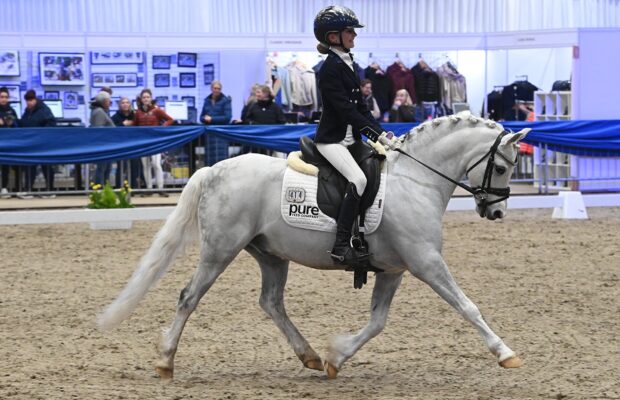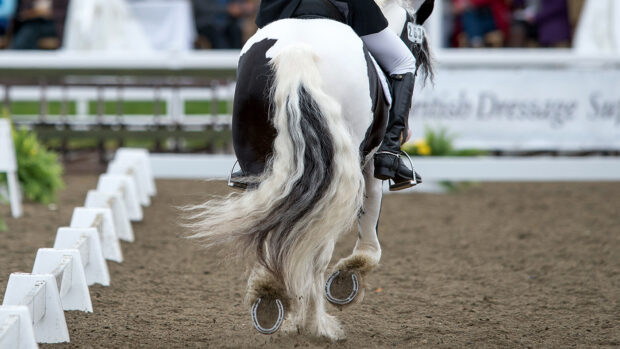Just like people, there are horses out there that don’t have the best work ethic and aren’t as responsive as we’d like. H&H asks dressage trainer and show producer Jo Bates the best ways to help give a lazy horse impulsion
How many times have you heard a rider say “he’s so lazy”, “boring” or “uncooperative”? Not all horses are sharp off the leg or enjoy their work as much as their stable mate, but using the correct exercises a partnership with such a horse doesn’t have to be full of frustration and constant arguments.
Jo Bates gives us some of her training tips to help a lazy horse become responsive to your aids rather than ignoring them.
1. “Lazy horses need quick sharp aids, not nagging aids,” says Jo. “Everything you do requires energy and if you have enough energy, a horse will start to perform better.”
2. “Practise walk to trot transitions as this will help to keep the horse alert and responsive,” says Jo. “If your horse is slow to respond to the upwards transition this is when you can use one quick aid from your leg along with a click from the rider. He might go forwards quickly but do not restrict him in the mouth (as we are encouraging them to go forwards and you don’t want to give them mixed signals). If necessary wear a neck strap so you don’t restrict your horse in the mouth. Praise your horse if he goes forward immediately when you ask him so that they know they are doing the right thing. You are training them to go off light, effective aids so that in a test situation it looks effortless and you don’t have to work so hard to keep the forward impulsion. You may have to repeat this a few times until your horse understands that they have to go off a light leg aid. Be sure to praise your horse each time he goes off a light leg aid.”
3. “If necessary you can carry a schooling whip. We use one with a large flat flap at the end which makes a noise rather than punishing the horse. A flick (not hit) behind the leg from the schooling whip can be used in conjuction with a quick leg aid if necessary.”
4. “Using spurs can give your horse the opportunity to respond to much more subtle aids, but these should only be used when the rider has a secure independent seat and under expert professional guidance.”
5. “Work your horse into a contact/connection even if this means working long and low to start with. Make sure that the moment you start your schooling session you mean are focused on the task and hand and mean business,” adds Jo.
6. “Make sure he’s happy with his bit and double check his teeth aren’t sharp. If you suspect any problems make an appointment with a qualified equine dental technician.”
7. “Keep doing lots of transitions. We do lots in a schooling session so that the horse doesn’t get bored and stays alert.”
8. “Aim for short, sharp sessions which successfully achieve your aim rather than going on for ages and not achieving anything. This only leads to disappointment and both horse and rider will be left feeling frustrated. Have a clear plan in your mind of what you want to achieve.”
Like this? You might also enjoy reading these:
Isobel Wessels: 9 tips for dressage success
7 ways to perfect your canter-to-trot transition
9. “Take a good look at his weight, diet and feed. I also think it’s a good idea to speak to a nutritionist from a feed company who can condition score your horse and talk through the best type of food for its type and temperament,” advises Jo.
10. “Try to vary a lazy horse’s work as much as possible. Cantering up hill will help to increase fitness and stamina. I also recommend using trotting poles as they’re a great way to add interest and increase energy. A lot of schooling can also be done out hacking when the horse is naturally more interested in what it is doing.”



